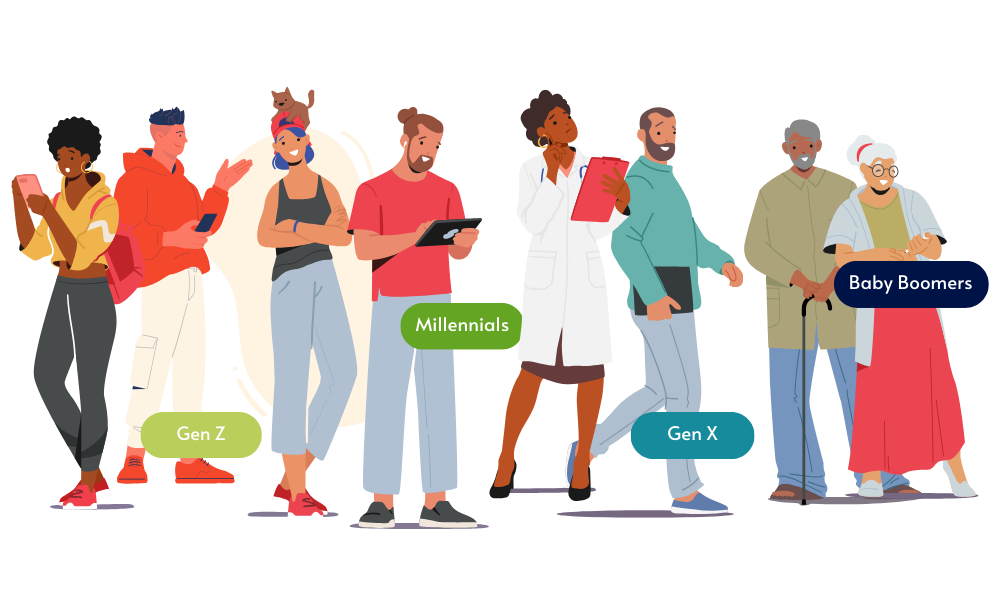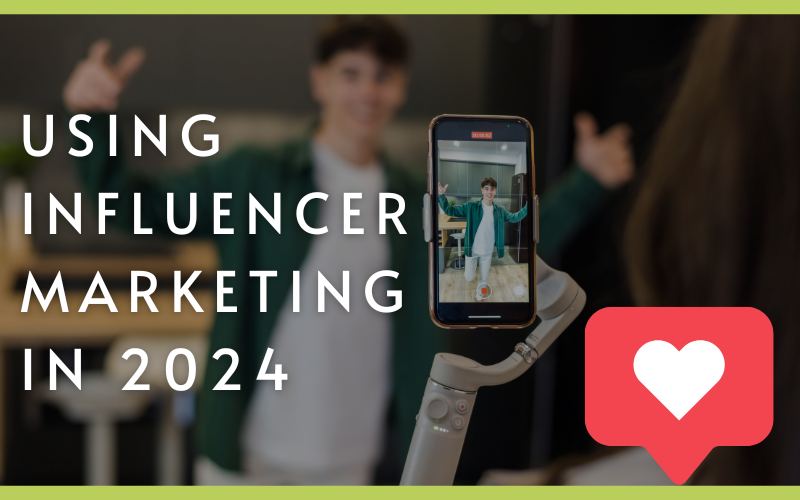Influencer marketing has been a buzzword for several years now, with brands across the globe investing heavily in partnerships with social media stars to reach new audiences and drive business. As we move past the halfway point of 2024 though, influencer marketing is entering a new era.
The effectiveness of this strategy has started to raise a lot of questions – especially with the evolving attitudes of Gen Z, the rise of micro-influencers through platforms such as TikTok, the high costs and questionable ROI of traditional influencer partnerships, and the impact of algorithm changes on major social media platforms. This article will explore all of these factors in detail and evaluate whether influencer marketing is still a viable growth strategy for businesses in 2024.

Gen Z - the Sceptical Generation
One of the most notable changes in the influencer marketing landscape is the growing scepticism among Gen Z consumers; this generation is highly attuned to authenticity and transparency. They are not easily swayed by traditional influencer endorsements, which they often perceive as inauthentic or ‘fake’ – this generation values real, genuine interactions and tends to distrust overly polished or commercial content.
Gen Z consumers are more likely to call out any posts that they feel are disingenuous and avoid products that are promoted through what they perceive as inauthentic influencer recommendations. They are more likely to actively seek out reviews and recommendations from friends and family or trusted communities rather than relying on the word of an influencer who is being paid to promote a product. This shift in the behaviour of this generation of consumers means that brands need to rethink their strategies and focus on creating authentic connections with their target audience, rather than relying solely on using influencer advertisement.

The Rise of Micro-Influencers
Some social media platforms have undoubtedly become a dumping ground for advertisements and sponsored posts. While traditional influencers with large followings may be losing their sway due to the sheer amount of posts they create around “gifted” items and advertising product after product, there is a growing trend of micro-influencers gaining traction through platforms like TikTok. TikTok’s unique algorithm allows users with relatively small followings to become micro-influencers if their content resonates effectively with their audience. TikTok Shop further empowers these individuals by increasing their reach based on their sales performance rather than their follower count, allowing their influence on their audience to be seen as more authentic.
This shift is significant because it almost democratises influence, allowing anyone with compelling content to reach a wider audience. Brands can benefit from this trend by partnering up with micro-influencers who have a more engaged and loyal following; these smaller influencers often have higher engagement rates and can offer more authentic endorsements that resonate better with today’s savvy consumers.
Download Our Free Marketing Guides
We’ve put together some incredibly useful resources for businesses who want to learn how to target their marketing towards particular age groups.
And yep, they’re completely free! Simply join our mailing list to recieve our newsletters for business owners, and you’ll be directed to the download straight away.


The Real Cost of Traditional Influencer Campaigns
Another critical aspect to consider is the cost and return on investment (ROI) associated with traditional influencer marketing campaigns. High-profile influencers, such as the Kardashians, are known for charging a small fortune to promote brands and their products. While these campaigns do generate significant visibility for said brands, the actual ROI can be questionable. For example, despite her undeniably impressive following, studies have shown that only 1% of Kim Kardashian’s followers engage with her posts by leaving comments and likes. Due to the size of her social media following, this of course does mean that millions of people will still see what she posts, but due to their incredibly low engagement rate, this figure is much lower than would be expected.
The high costs associated with such influencers can be a gamble, with brands sometimes spending much more on the endorsement than they’ll make back in sales. This has led many companies to reconsider the value of such investments and look for more cost-effective and impactful ways to engage their audience instead. Micro-influencers don’t charge fees as high as what some mega-influencers do, so the risk is much lower with a greater chance of seeing a decent ROI.

Algorithm Changes on Social Media
Social media platforms are continually evolving, and one of the most significant changes in recent years has been the shift in how their algorithms work. Platforms like Instagram and Facebook have moved away from prioritising posts based on likes, comments, and follower counts which were previously easy to manipulate. Instead, they are focusing more on the quality and relevance of the content to their consumers.
This change means that influencers who once thrived on inflated follower counts and engagement metrics are finding it harder to maintain their reach. The new algorithms favour content that genuinely engages users, which aligns with the broader trend towards authenticity and quality over quantity. Brands need to adapt to these changes by ensuring that their influencer partnerships focus on creating meaningful and engaging content rather than just relying on the influencer’s follower numbers.
Train Your Staff in Marketing
Your Own In-House Content Creator

How to Use Influencer Marketing
Given these trends, businesses looking to take advantage of influencer marketing in 2024 need to navigate this with a more strategic approach. Here are some key tips that your brand should take into consideration:
- Focus on Authenticity and Transparency: Partner with influencers who genuinely align with your brand values and have an authentic connection with their audience. Authenticity is crucial for building trust with consumers, especially Gen Z.
- Micro-Influencers, Maximum Impact: Consider working with micro-influencers who have smaller but more engaged followings. These influencers often provide better return on investment and tend to create more genuine connections with their audience.
- Utilise Platform Features: Take advantage of in-app features like TikTok Shop that allow for organic growth based on content quality and sales performance. Platform features such as this can help you reach a wider audience without relying solely on follower count.
- Measure Impact Beyond Follower Count: Shift your focus from traditional metrics like follower count and likes to more meaningful indicators of success, such as engagement rates, sales conversion figures, and audience sentiment.
- Adapt to Algorithm Changes: Stay updated with the latest algorithm changes on social media platforms and adjust your strategy accordingly. Ensure that your content is high-quality, relevant, and engaging so that it meets the new criteria set by these platforms.
While influencer marketing is definitely not obsolete – nor is it heading that way – it has evolved significantly over the last couple of years and businesses will need to adapt to this in order to reap the benefits.
The rise of Gen Z’s scepticism towards influencer endorsements, the emergence of micro-influencers through platforms like TikTok, the high costs and uncertain ROI of celebrity endorsements, and the impact of social media algorithm changes all point to a need for a more strategic and authentic approach.
Brands that can navigate these changes by focusing on genuine connections and staying up-to-date with changes in their audience’s behaviour and platform algorithms will be much better positioned to succeed in the world of influencer marketing.






